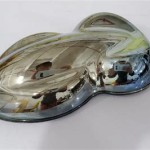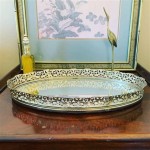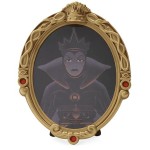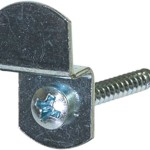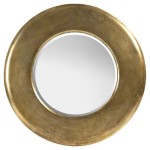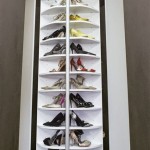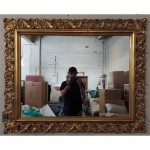Antique Frameless Beveled Mirror
Antique frameless beveled mirrors offer a unique blend of historical charm and understated elegance. Their sleek design allows the reflective surface to take center stage, while the beveled edges add a subtle touch of sophistication. Understanding the characteristics, history, and care of these mirrors can enhance their appreciation and ensure their preservation for generations to come.
A beveled mirror is created by grinding and polishing the edges of a piece of mirror glass at an angle, creating a sloping, faceted edge. This technique not only adds a decorative element but also softens the sharp edges of the glass. In frameless mirrors, the bevel becomes a more prominent feature, drawing the eye to the play of light and reflection it creates.
The absence of a frame contributes to the minimalist aesthetic of these mirrors. This allows them to integrate seamlessly into various design styles, from traditional to contemporary. Frameless mirrors can also make a space feel larger and brighter due to the uninterrupted reflective surface.
Antique frameless beveled mirrors can be distinguished from modern reproductions through several key features. The glass in older mirrors often possesses a slightly wavy or distorted appearance due to the limitations of early glassmaking techniques. This imperfection, referred to as "antique glass," adds character and authenticity. The bevel itself can also offer clues to the mirror's age; older bevels are often wider and more pronounced than those found on contemporary mirrors.
The backing of the mirror can also provide insight into its age. Older mirrors might have a wood or metal backing, while later examples could feature a protective coating or backing paint. Examining the mirror for any signs of wear, such as patina or slight discoloration, can further support its authenticity. Consulting with an antiques expert can provide more definitive authentication if needed.
The history of beveled mirrors can be traced back centuries. Early examples were produced using laborious hand-beveling techniques, making them expensive and exclusive items. The advent of mechanized glass production in the 19th century made beveled mirrors more accessible, leading to their increased popularity in homes and public spaces.
During the Victorian era, beveled mirrors became a staple in interior design. They adorned grand homes, reflecting the ornate furnishings and opulent décor of the period. Large, frameless beveled mirrors were often used as overmantels, adding a touch of grandeur to the fireplace, the heart of the Victorian home.
The Art Deco period also embraced the sleek lines of frameless beveled mirrors. Their geometric simplicity complemented the streamlined aesthetic of the movement, frequently incorporated into furniture and architectural details.
The popularity of frameless beveled mirrors has endured through various design trends. Their adaptability allows them to seamlessly integrate into modern interiors, offering a touch of timeless elegance. Whether used as a statement piece in a living room or a functional addition to a bathroom, their reflective qualities enhance the perception of light and space.
Proper care and maintenance are essential to preserving the beauty and integrity of antique frameless beveled mirrors. Regular cleaning with a soft, lint-free cloth and a gentle glass cleaner is recommended. Avoid using harsh chemicals or abrasive cleaners, as these can damage the delicate surface of the mirror and its backing.
Handling antique mirrors requires caution. The beveled edges can be susceptible to chipping, so it's crucial to handle the mirror by its sides, avoiding contact with the edges. When transporting or storing an antique mirror, use appropriate protective materials, such as padding and acid-free paper, to prevent scratches and damage. Avoid exposing the mirror to extreme temperatures or humidity, as these can cause warping or deterioration of the glass and backing.
Hanging a frameless beveled mirror requires specialized hardware designed for this purpose. Consult with a professional if you are unsure about the appropriate method for securing the mirror to the wall. Proper installation ensures the safety and stability of the mirror and prevents accidental damage.
Antique frameless beveled mirrors represent a tangible connection to the past, offering a glimpse into the decorative styles and craftsmanship of previous eras. Their enduring appeal lies in their ability to combine historical significance with contemporary design sensibilities. By understanding their history and practicing proper care, owners of these beautiful objects can contribute to their preservation for future generations to appreciate.

Vintage Etched Mirrors Mirror Frameless Beveled Without Frame

Vintage Frameless Bevelled Wall Mirror 38cm X 50cm Flora Furniture

Extra Large Vintage Mirror Art Deco Frameless

Vintage 1960s Frameless Beveled Wall Mirror With Gilded Corners Chairish

Antique Frameless Art Deco Oblong Mirror With Scalloped Edging

Pin On Vintage Frameless Mirrors

Modern Bathroom Frameless Beveled Mirror Wall Factory Antique Style China Made In Com

Angled Sided Frameless Bevelled Art Deco Mirror Silver Antique 329 00

Mirror Round Beveled Frameless Blue Birds Home Sweet

Vintage Etched Frameless Mirror For At Pamono

